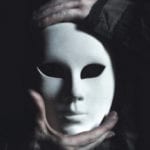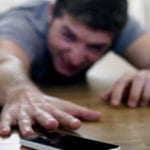 Mysteries
Mysteries  Mysteries
Mysteries  History
History 10 Surprising Stories About the Texas Rangers
 Humans
Humans 10 Philosophers Who Were Driven Mad by Their Own Theories
 Miscellaneous
Miscellaneous 10 Video-Game-Worthy Weapons and Armors from History
 Weird Stuff
Weird Stuff 10 Psychics Who Accurately Predicted Wartime Events
 The Arts
The Arts 10 Pieces of Art Inspired by a Broken Heart
 Health
Health 10 Science Fiction-Sounding New Medical Treatments
 History
History 10 Surprising Facts About the Father of Submarine Warfare
 Space
Space Ten Astonishing New Insights into Alien Worlds
 Weird Stuff
Weird Stuff 10 Bizarre Summer Solstice Rituals Still Practiced Today
 Mysteries
Mysteries Top 10 Haunting Facts About the Ghost Ship MV Alta
 History
History 10 Surprising Stories About the Texas Rangers
 Humans
Humans 10 Philosophers Who Were Driven Mad by Their Own Theories
Who's Behind Listverse?

Jamie Frater
Head Editor
Jamie founded Listverse due to an insatiable desire to share fascinating, obscure, and bizarre facts. He has been a guest speaker on numerous national radio and television stations and is a five time published author.
More About Us Miscellaneous
Miscellaneous 10 Video-Game-Worthy Weapons and Armors from History
 Weird Stuff
Weird Stuff 10 Psychics Who Accurately Predicted Wartime Events
 The Arts
The Arts 10 Pieces of Art Inspired by a Broken Heart
 Health
Health 10 Science Fiction-Sounding New Medical Treatments
 History
History 10 Surprising Facts About the Father of Submarine Warfare
 Space
Space Ten Astonishing New Insights into Alien Worlds
 Weird Stuff
Weird Stuff 10 Bizarre Summer Solstice Rituals Still Practiced Today
10 Strange Psychological Disorders That Will Blow Your Mind
Just about everyone reading this has likely heard of psychological maladies like obsessive-compulsive disorder and schizophrenia. Conditions such as anxiety disorders and depression are everyday terms. However, there are some strange mental illnesses that you’ve probably never heard of.
Some of these are location-specific and only affect people visiting a place. Others affect anybody but are just as weird. Imagine a disorder that makes a person believe they do not exist, that their house is a clone, or that they are outside their own bodies. You might be surprised that some of these disorders even exist.
10 Jerusalem Syndrome

Jerusalem syndrome is a mental disorder that affects tourists who visit Jerusalem. Sufferers believe they are Biblical characters or are somehow related or affiliated to Jesus.
In one instance, an Irish woman went to a hospital, claiming she was about to give birth to Baby Jesus, even though she wasn’t pregnant. Another man from Canada thought he was Samson and tried to destroy a wall. An Austrian man asked chefs at the hotel in which he was staying to prepare him the Last Supper.
There have also been reports of tourists thinking they are Biblical characters like King Solomon. Others suddenly start giving sermons or just shout on the streets. One notorious case involved a British man who planned to get himself killed by Satan in order to trigger the end of the world.
The syndrome affects about 50 tourists every year, but those are just the ones that are documented. Authorities believe that many more cases actually occur. Interestingly, most sufferers recover from the disorder the moment they leave Jerusalem.[1]
9 Stendhal Syndrome

Stendhal syndrome (also called Florence syndrome or hyperkulturemia) is a psychosomatic disorder that can affect people visiting art galleries. Sufferers become so overwhelmed by the beauty of the exhibited artworks that they suddenly develop symptoms.
Their hearts beat faster, and they become dizzy and confused. Some behave like lunatics, hallucinate, or even faint. Some sufferers do not need to be in an art gallery for the syndrome to occur. They will exhibit the symptoms when they are in any beautiful environment.
Stendhal syndrome was first noted by author Henri-Marie Beyle (who wrote under the pseudonym “Stendhal”) in his 1817 book Naples and Florence: A Journey from Milan to Reggio. Beyle wrote that he became so overwhelmed by the beautiful ceiling frescoes at the Santa Croce Cathedral in Florence, Italy, that he exhibited some symptoms of the disorder now named after him.[2]
8 Fregoli Delusion

The Fregoli delusion is a psychological disorder that makes a person believe that other people are actually the same person in disguise. Someone with the Fregoli delusion will say that the differences in others’ clothing and looks are just an elaborate disguise to make the sufferer think the others aren’t the same person.
The disorder is named after Leopoldo Fregoli, an Italian actor known for doing many impersonations. It was first observed in an unnamed patient who believed everybody was one of two actresses called Sarah Bernhardt and Robine. The patient was so convinced that she attacked a stranger she believed was Robine.
It is very difficult or even impossible to convince people exhibiting the Fregoli delusion that they are suffering from a disorder. One ten-year-old sufferer believed everybody he saw was his father in disguise. When somebody pointed out that the nurse could not be his father because she was a woman, he said his father was clever enough to disguise himself and claimed that the doctors could not detect it.[3]
7 Clinical Lycanthropy
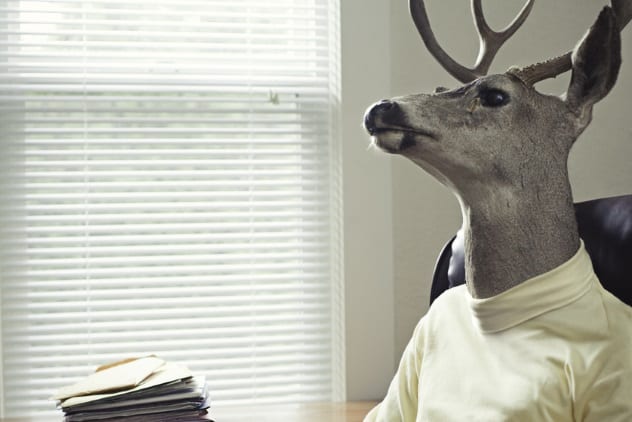
Clinical lycanthropy is a mental disorder that makes people think they are turning into animals, most notably wolves. To adjust to their supposed transformation, clinical lycanthropy sufferers will usually grunt like animals and attempt using their fingers like claws. They will complain of hair growing on their arms and will sometimes mistake their reflection in a mirror for an animal’s.
The first case report was published in 1852, when a man thought he had turned into a werewolf. He believed he was covered in hair and had grown sharp, wolf-like teeth. Both were untrue. He insisted on eating raw meat but did not eat it when it was served because he only wanted rotten meat.
Thankfully, clinical lycanthropy is rare. Only 13 cases of people believing they are wolves have been reported since 1850. However, it jumps to 56 when we consider other cases involving people who thought they’d turned into other animals. Doctors believe some cases have been missed, since psychiatrists will misdiagnose clinical lycanthropy as schizophrenia, bipolar disorder, or psychotic depression.[4]
6 Cotard Delusion
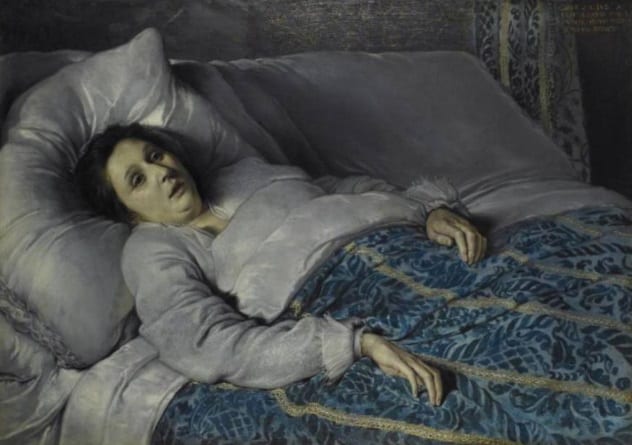
Cotard delusion is a mental disorder that makes sufferers think they are dead. They’ll believe they are not in control of their bodies and may even assume they are already rotting. However, some sufferers know they are alive but will wrongly believe that some parts of their bodies are dead or do not even exist.
Cotard delusion is often caused by a traumatic incident like an accident or fainting. Sufferers believe they actually died during the incident. And they will often believe they cannot die again since they are already dead. The disorder was first observed in an unnamed Frenchwoman only identified as Mademoiselle X (depicted above).
In 1880, Mademoiselle X visited Doctor Jules Cotard and complained that she thought she was dead. Doctor Cotard took interest in her disorder and studied it extensively. He called her condition “the Delirium of Negation,” but it would later take his name. Mademoiselle X ultimately died of starvation, as she refused to eat due to the false belief that she did not have a stomach, nervous system, or torso.[5]
5 Folie A Deux
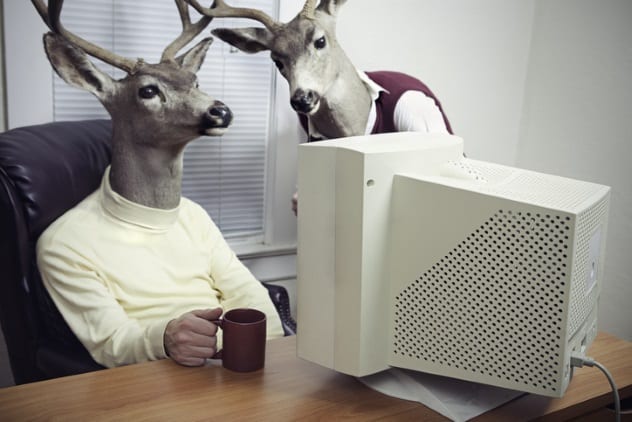 Folie a deux (French for “madness of two”) is a psychological condition in which the delusions of one person essentially spread to others. Folie a deux can also be called “folie a trois” when it affects three people, “folie a quatre” when it affects four people, or “folie en famille” when it affects an entire family.
Folie a deux (French for “madness of two”) is a psychological condition in which the delusions of one person essentially spread to others. Folie a deux can also be called “folie a trois” when it affects three people, “folie a quatre” when it affects four people, or “folie en famille” when it affects an entire family.
Folie a deux was first documented in the 19th century, when a couple named Michael and Margaret thought someone was sneaking into their home and wearing their shoes. They believed this so much that they started convincing themselves that somebody was truly sneaking in.
In another case, three sisters believed some parts of the Bible were wrong and that God wanted them to live in a house that belonged to somebody else. They were arrested after vandalizing the home and held in a cell, where they stripped themselves naked and sang worship songs.
In one recent case that happened in 2016, a couple fled town with their three children over the erroneous belief that somebody was trying to kill them. Two of the three children also believed the story, making it a folie a quatre.[6]
4 Reduplicative Paramnesia

Reduplicative paramnesia is a rare mental disorder that makes sufferers think their house or another building has been cloned. Sometimes, they believe their house has been disguised to look like another building. Many sufferers believe the hospital in which they are receiving treatment is actually their disguised home.
Sometimes, sufferers wrongly assume something has been taken away from their homes and taken somewhere else. One woman who had a temporal lobe stroke suffered from the disorder after her discharge from the hospital. She claimed that some furniture had been taken from her home to the hospital.[7]
3 Factitious Disorder

Factitious disorder (aka factitious disorder imposed on self or Munchausen syndrome) motivates people to fake illnesses. Sufferers will often go to extreme lengths to make people think they are truly sick. They will readily add foreign substances like blood to their urine samples and add heat to a thermometer to make people think they have a fever.
In extreme cases, sufferers will injure themselves and even undergo surgery for nonexistent conditions. They usually understand that they’re not sick, but they don’t understand why they are pretending to be sick. Even when they do, they just cannot stop pretending to be sick, even when challenged with evidence proving they’re not ill.
Factitious disorder imposed on another (also referred to as Munchausen syndrome by proxy) is a subcategory of factitious disorder. It involves a person claiming another person is sick. Most of the time, it is usually a parent saying a child is sick. This is just as dangerous, since the parent could injure the child just to prove they are truly sick.[8]
2 Delusional Parasitosis

Delusional parasitosis is a mental disorder that makes a person think their skin is infected with parasites and animals like lice, fleas, worms, and spiders.
Sufferers will usually scratch their skin until they become injured. More desperate patients will use dangerous substances on their skin just to get rid of the creatures. They’ll even take skin and hair samples and put them under microscopic slides before presenting them to the doctor.
Those affected are so convinced of their delusion that they will confidently explain how the creatures entered their bodies. In some instances, they will even claim that the parasites have crept from their bodies and into their homes.
Delusional parasitosis often affects elderly people and is more common in women than men. It is usually the result of an underlying illness, like an anxiety disorder that makes the sufferer afraid of getting sick. In rarer instances, it is caused by other conditions like schizophrenia and obsessive-compulsive disorder.
Sometimes, it is just the sufferer being paranoid or could be the result of drug abuse or alcohol withdrawal.[9] Delusional parasitosis can sometimes become folie a deux when a person believes they are suffering from the disorder because their partner is suffering from it. The situation is worsened when the partner reinforces their belief that the nonexistent creatures are really there.
1 Depersonalization-Derealization Disorder

Sufferers of depersonalization-derealization disorder (aka depersonalization disorder) think they are outside their bodies. It can also occur when a person believes the things they see around them do not really exist. Sometimes, they even think their memory does not belong to them.
Some sufferers believe they are floating above their bodies. Others understand they are inside their bodies but will usually consider themselves as more robot than human, since they assume they do not have any control over their actions. They will usually feel that their heads are covered with soft materials like cotton and assume their body parts are bigger or smaller than they appear.
Depersonalization-derealization disorder is more common in people who’ve been through traumatic experiences and can last anywhere from hours to months. Sufferers often have troubled relationships, since they are usually more concerned about their supposed nonexistence than with interacting with their families and friends. They will frequently check themselves and the things around them to confirm that they truly exist.[10]
Read about more bizarre psychological disorders on Top 10 Culture-Specific Illnesses And Mental Disorders and 10 Insane Psychological Conditions You Won’t Believe Can Suddenly Appear.



